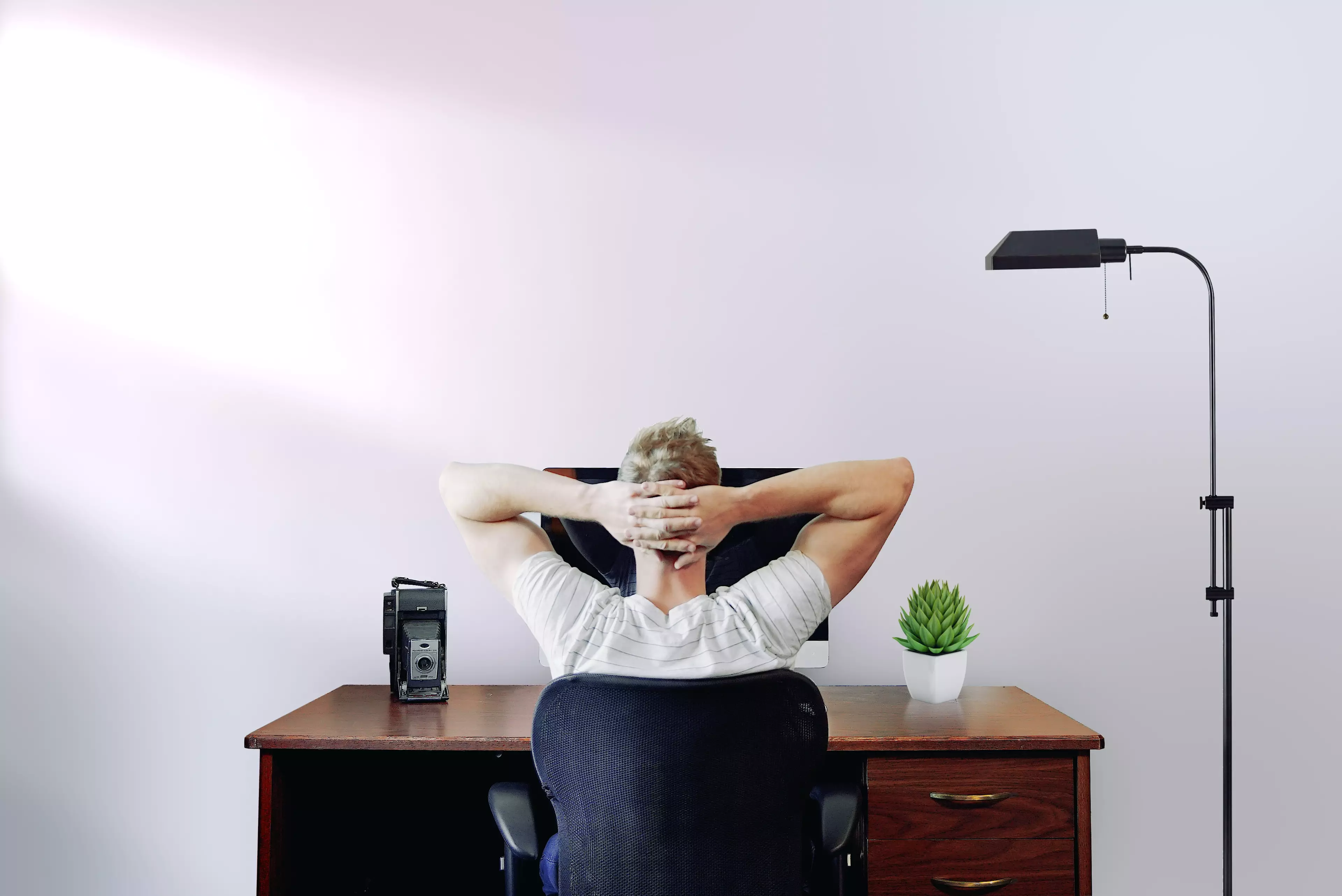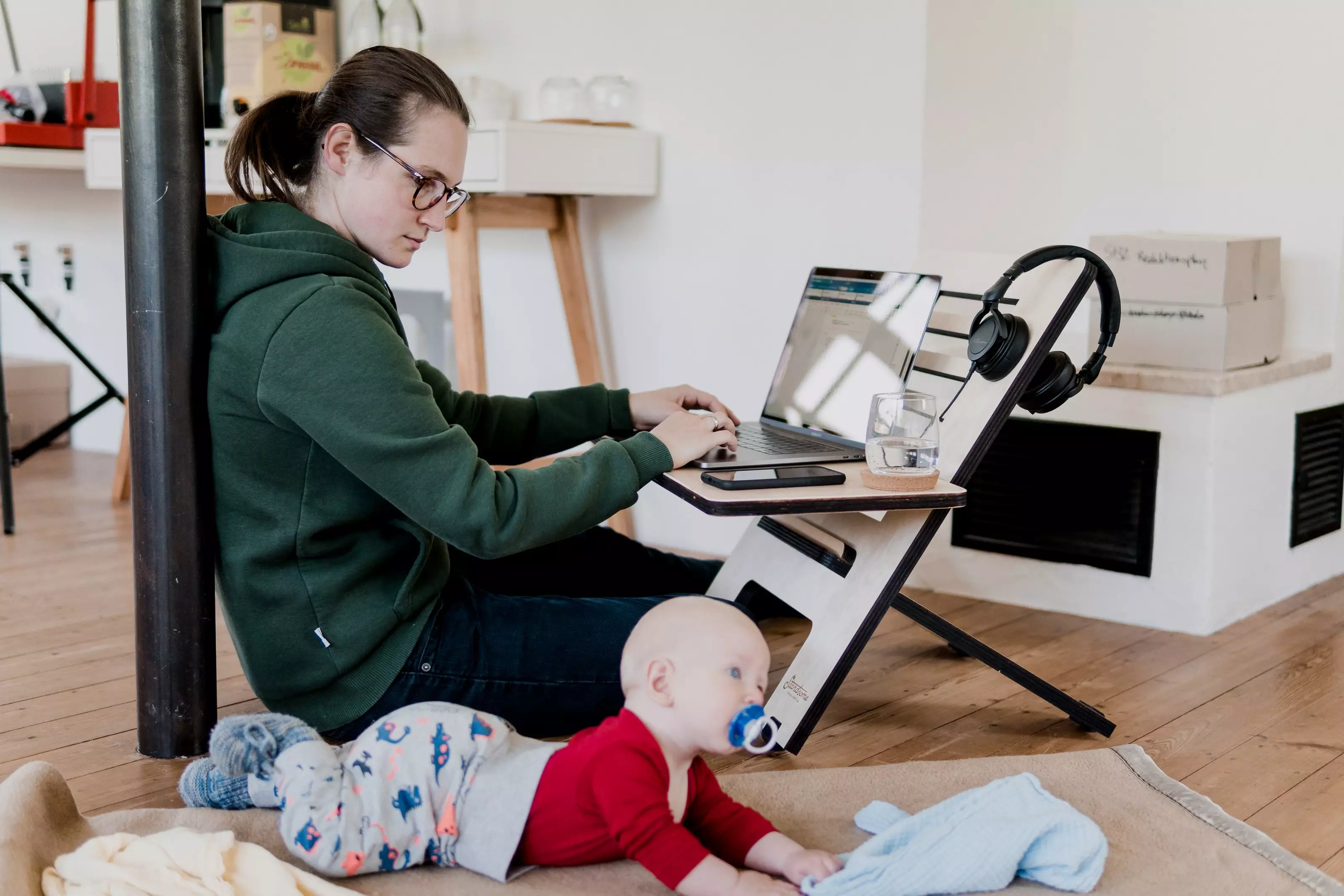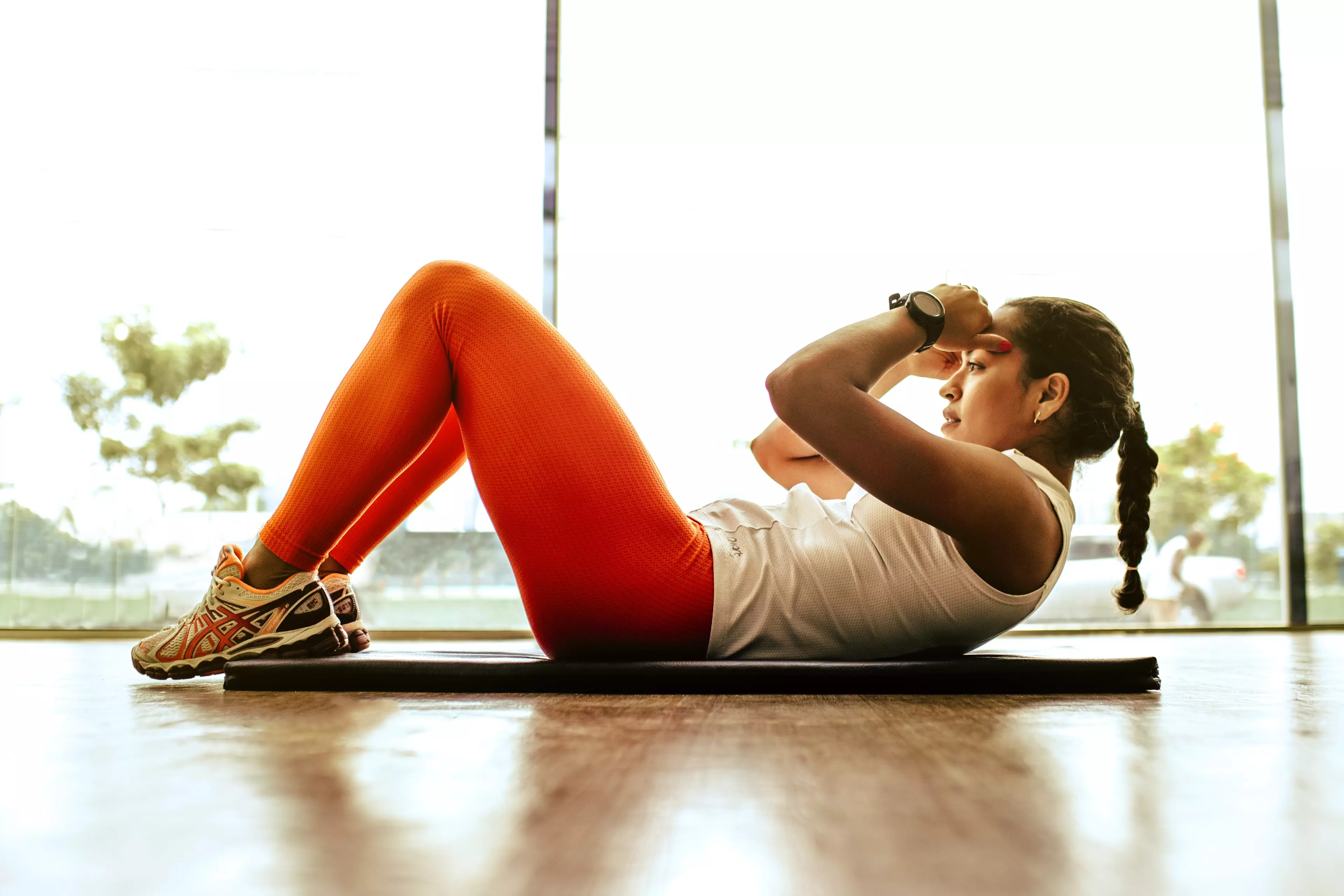
Working from home during the pandemic has been great in many respects. There's no dealing with the stressful morning commute or even a need for getting dressed properly (unless of course you have a Zoom meeting, but even then just throw a jumper on).
But one of the major downsides to working from home is the increased amount of time we're sitting down.
In our own homes, we're not having to do the (brisk) walk from the train station to the office every morning, and we don't have as far to go for the kettle.
Advert
As a result, we're spending more time on our butts and it's not ideal for our health. In fact, the negative effects of this have been coined 'sitting disease.'
What is sitting disease?

Sitting disease is an umbrella term for the harmful health effects of sitting down for too long. While the term is used in the science community, it's not considered a diagnosable disease at the moment.
Advert
According to the NHS, the health risks of sitting down for too long started to become apparent in bus drivers during the 1950s. A study revealed bus drivers were twice as likely to suffer a heart attack than their bus conductor colleagues. While the drivers sat for 90 per cent of their shifts, the bus conductors climbed on average 600 stairs each shift.
Since then, research by Queen's University Belfast has found that sitting down for too long is linked to 70,000 deaths a year in the UK.
"Many individuals in the UK spend their leisure time in sedentary behaviour, and the workplace represents a significant proportion of unavoidable daily sitting time for many people," said Leonie Heron, Lead Investigator of the 2019 research from the Centre of Public Health at Queen's University Belfast.
"Measures should be taken to reduce sedentary behaviour with the aim of improving population health and reducing the financial burden to the health service."
Advert
Sedentary lifestyles have increased with technology giving us more convenience and less of a need to move. And working from home during the pandemic has made matters even worse.
What happens if you sit down for too long?
A sedentary lifestyle has been linked to a number of chronic diseases such as: type 2 diabetes, cardiovascular disease and a number of cancers, as well as mental health issues. There's also an increased risk of developing blood clots in your legs (deep vein thrombosis) and varicose veins.
While research is still needed to understand the direct link between sitting for too long and these diseases, it's widely believed that it's due to a slowing down of our metabolism.
Advert
Day-to-day, sitting down for too long leads to weakened muscles, weight gain, stiff joints, anxiety and depression and trouble sleeping.
Inactivity due to COVID-19 poses greater risk to health problems Unsplash/Standsome Worklifestyle
Unsplash/Standsome Worklifestyle

The number of people sitting down for prolonged periods of time massively increased during the pandemic. While plenty of fitness classes managed to move over to Zoom, it wasn't for everybody and the reopening of gyms on 12 April have come as a relief to many.
During the first UK lockdown in May 2020, the Nottingham Biomedical Research Centre (NBRC) produced a white paper about the effects of increased inactivity in people at the start of the pandemic.
Advert
Professor Paul Greenhaff, of NBRC said we should all be aiming for at least 5,000 steps a day.
"Inactivity of less than 5,000 steps per day and extended periods of sitting/lying will accelerate health decline and at a multi-organ level. This in itself should be avoided by people of all ages to maintain good health."
The study found that in just two days of inactivity, we begin to lose muscle mass. In 10 days of inactivity, six per cent of our muscle mass is lost, rising to10 per cent after 30 days.
"Furthermore, very recent evidence has also revealed inactivity puts people at greater risk of severe COVID-19 outcomes," added Professor Greenhaff. "Maintaining physical activity and reducing sedentary time needs to be given greater public health focus and priority."
How can sitting disease be prevented?
While the NHS doesn't currently give a time limit to how long you should be sat down for, it recommends that adults get at least 150 minutes of exercise a week. Broken down, that's around 20 minutes a day.
The NBRC white paper suggests regular low/medium intensity high volume exercise and together with a 15-25 per cent reduction in caloric intake to help reduce the risks posed by sedentarism. Simply put, it's about moving more and eating less if our jobs keep us confined to a desk and chair all day.
Standing up and moving around for one to two minutes throughout the working day can really help. You could set a timer each hour to remind you to stand up and move, or if you've got a smart watch such as an Apple Watch or a Fitbit, you can set it to remind you to stand up and measure your activity.
Now that gyms are open and lockdown restrictions are easing, it's getting easier to return to an active lifestyle. But even if you do a minimum of 20 minutes of moderate exercise a day, you still need to be mindful about sitting down for longer than six hours a day.
Featured Image Credit: Unsplash
